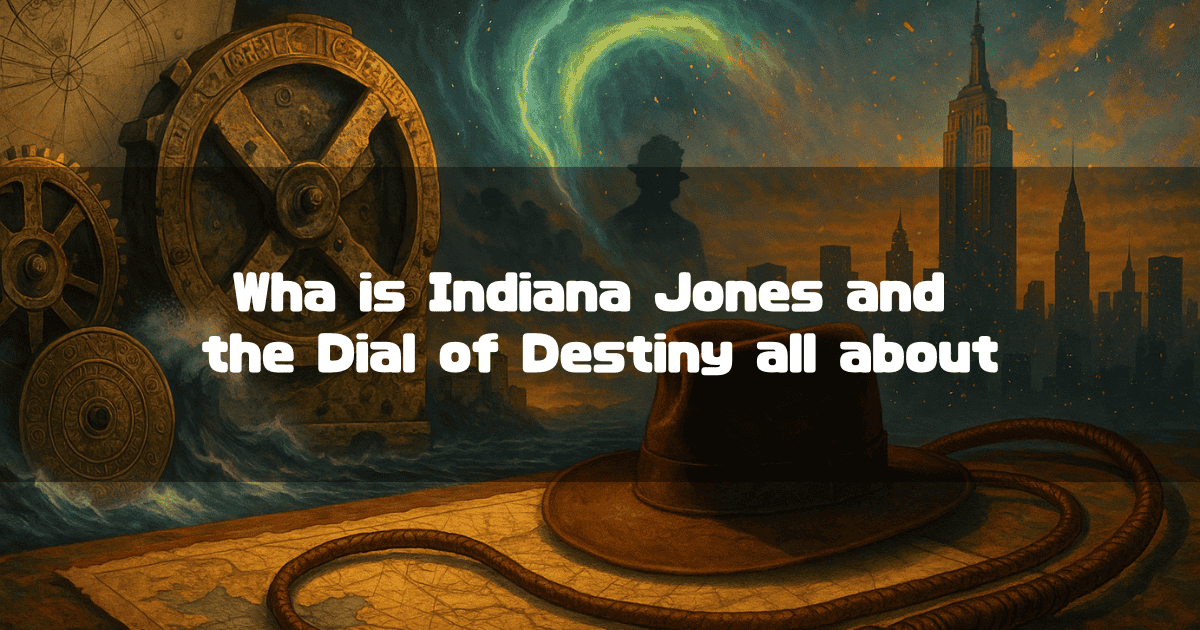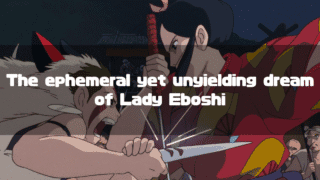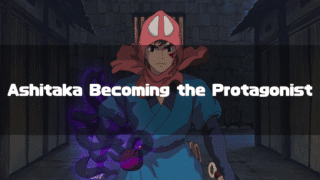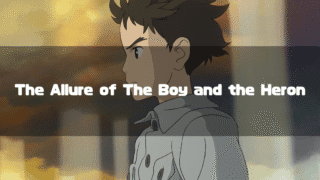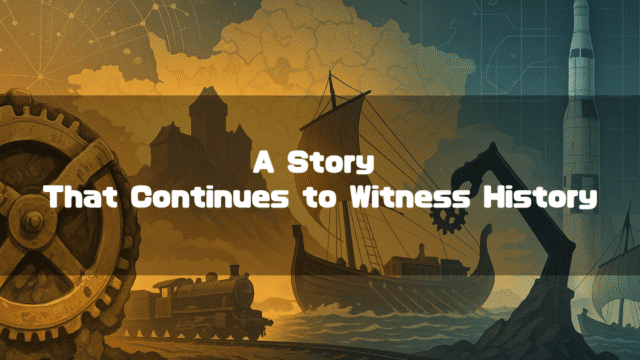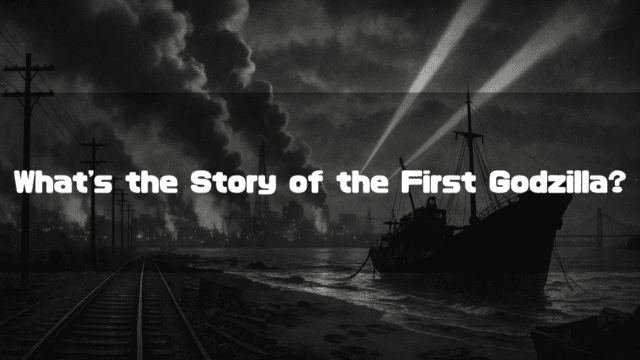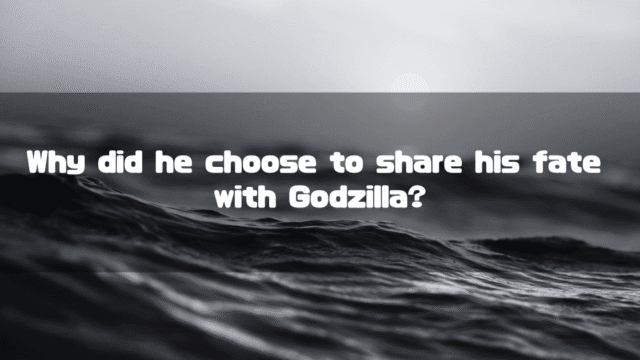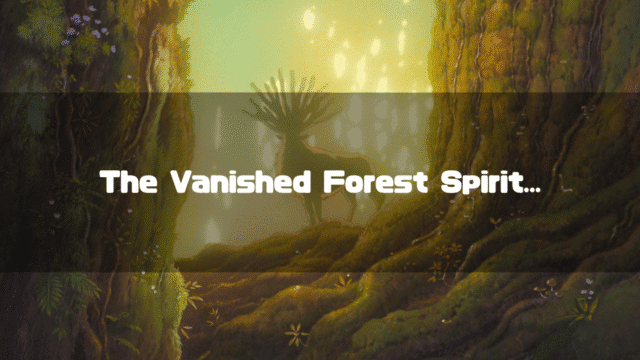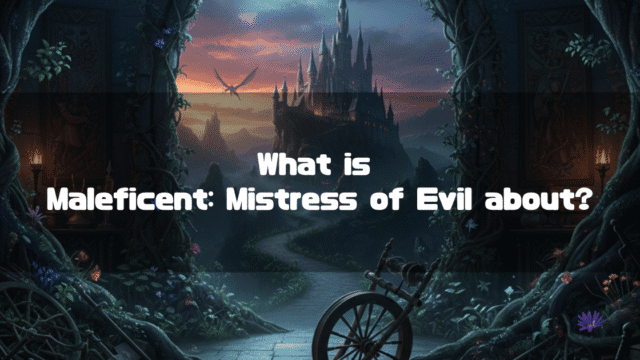Indiana Jones and the Dial of Destiny directed by James Mangold, was released in theaters on June 30, 2023. It is the fifth installment in the Indiana Jones series, with Steven Spielberg, who directed the previous films, serving as an executive producer.
This film was released more than a decade after its predecessor, Kingdom of the Crystal Skull (2008), and I remember going to the theater with great anticipation.
However, the world depicted was one where “Indy and Marion’s son, Mutt, had been killed in action.” To make matters worse, Indy and Marion were in the process of divorcing, and Indy was retiring from his university post—a situation devoid of all hope.
The joy I felt seeing Mutt and Marion in Kingdom of the Crystal Skull was completely shattered.
The film is steeped in a profound sadness. Near the end, Indy travels back in time with the “Dial of Archimedes” to the very era he had spent his life studying. He intends to stay, but Helena, a new character in this film, knocks him out with a single punch and drags him back to the “present.”
Of course, Indy’s reasons for wanting to remain in that era were his fascination as an archaeologist and the fact that nothing but despair awaited him in the “present.” Yet… it seems Indy had another motive as well.
Furthermore, Helena, a central figure in this film, is a character who embodies a certain “contradiction.” While she commits the disrespectful act of putting artifacts up for auction, she also possesses deep historical knowledge and an intellect sharp enough to have memorized her father’s notes.
This analysis will focus on the following two points:
- Indy’s true reason for wanting to stay in the past
- Helena’s enigmatic nature
First, let’s recap the plot of Indiana Jones and the Dial of Destiny.
*This article is an English translation of the original Japanese article, “【インディ・ジョーンズと運命のダイヤル】ネタバレあらすじと考察-インディが過去に留まろとした真の理由とヘレナの不可解な人間性-”.
Let an AI walk you through the highlights of this post in a simple, conversational style.
- Indy’s True Wish to Remain in the Past
Indy wanted to stay in history not just out of archaeological curiosity or despair with the modern world, but also from a faint hope as a father: that if he remained in the past, he might alter history and create a future where his son, who died in the Vietnam War, would live. This motive is a mirror image of that of the antagonist, Voller, who also sought to alter history. - Helena’s Hidden Purpose Behind Her Contradictory Actions
Helena’s actions, which at first seem driven by a desire for money, are fueled by a conflict between her vengeful feelings toward the archaeology that drove her father mad and her undeniable obsession with understanding him. Her adventure is also a journey to reclaim her lost relationship with her father through a “virtual family feud” with Indy. - The Film’s Core: Depicting the Tragedy of the Vietnam War
The death of Indy’s son symbolizes the “pain” of the “glory and pain” that the Vietnam War left on American society. This film is, in a way, a “Vietnam War movie,” expressing the sense of loss brought by the war not by depicting it directly, but through the unhealed grief of Indy and Marion. - Helena as a Symbol of a New Generation
Helena’s character is imbued with the cynical reality of her time: that even for a brilliant woman, the only way to earn a fortune independently was through quasi-criminal acts. She is portrayed as a new-generation character who approaches artifacts with a different set of values than Indy.
Indiana Jones and the Dial of Destiny(2023) Synopsis (Spoilers Ahead)
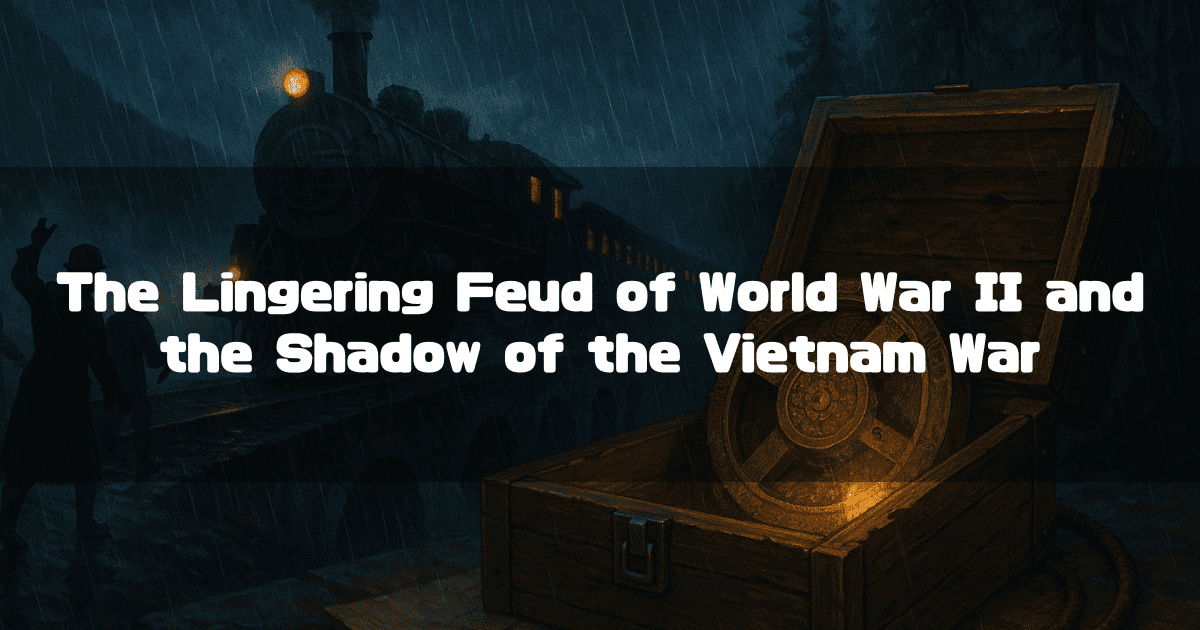
A Quick Summary, Character Map, and Explanation
-
Prologue in Wartime—From Recovering a Lance to Finding the “Dial”
In 1944, during the final days of World War II in France, Indy and his fellow archaeologist, Basil Shaw, attempt to recover the legendary “Lance of Longinus,” which has been stolen by the Nazis. However, the Nazi scientist Jürgen Voller dismisses the lance as a fake. His true target is the “Dial” (the Antikythera mechanism), said to have been invented by the brilliant mathematician Archimedes to detect fissures in spacetime. After a fierce battle aboard a train, they succeed in securing one half of the Dial. -
New York, 1969—Loss, a Reunion, and the Archives
In 1969, New York City is celebrating the Apollo 11 moon landing. Indy, grieving the death of his son in the war and separated from his wife Marion, is facing his last day of work before retirement. On this day, Helena, the daughter of his old friend Basil, appears before him. She claims to be continuing the work of her father, who dedicated his life to studying the Dial of Archimedes, and asks for Indy’s help. -
An Ambush and a Betrayal—A False Accusation and the Road to Tangier
As Indy shows Helena the Dial in the university archives, they are attacked by Voller’s men and the CIA agents assisting him. Voller is now posing as a NASA scientist. In the chaos, a university employee is killed, and Helena absconds with the Dial. Indy is framed for the murder and forced to go on the run. With the help of his old friend Sallah, he deduces that Helena has gone to Tangier to sell the Dial on the black market. -
A Hotel in Tangier—A Three-Way Scramble
Indy and Helena meet again at an illegal auction in a Tangier hotel. However, Voller’s gang and a local gangster, Helena’s vengeful ex-fiancé, also storm the scene. A chaotic three-way battle for the Dial ensues, and it is ultimately seized by Voller. Indy and Helena decide to search for the “Graphikos,” a tablet that reveals the location of the other half of the Dial. -
The Aegean Sea—Recovering the “Graphikos” and the Sound of a Gunshot
To find the Graphikos, they seek out Renaldo, an old friend of Indy’s and a master diver, and dive to a shipwreck in the Aegean Sea. However, just as they retrieve the tablet, Voller attacks. To force them to decipher it, Voller ruthlessly shoots and kills Renaldo in front of Indy. Thanks to Helena’s quick thinking, they manage to escape the boat. -
A Two-Layered Clue—The Destination is Sicily
The recovered Graphikos turns out to be a cleverly designed, two-layered clue from Archimedes. The surface inscription points to “Alexandria,” but this is a decoy. By deciphering a hidden golden disc within, they discover the true destination: a cave in Sicily known as the “Ear of Dionysius.” -
The Tomb of Archimedes—Discovering the “Other Half” and Completing the Device
In the deepest part of the cave, Indy and Helena discover the tomb of Archimedes. The skeleton resting there is wearing a wristwatch—a product of the future—deepening the temporal mystery. Just as they find the other half of the Dial, Voller catches up to them. He takes both pieces, finally assembling the Dial and its power to traverse time. -
Ancient Syracuse—A Miscalculation (or the Designer’s Intent) and the Final Showdown
Voller activates the Dial, intending to travel to 1939 to alter history. However, the fissure in spacetime leads not to his intended destination but to the Siege of Syracuse in 214 BC. The bomber carrying Voller is shot down by ancient Roman artillery, and he perishes in the crash. At the crash site, a young Archimedes himself appears and retrieves the wristwatch and the completed Dial from the futuristic aircraft. Face to face with the historical figure he has studied his whole life, Indy decides to remain in the past. But Helena, seeing his grave injuries, knocks him unconscious with a powerful punch and uses the Dial, now in Archimedes’ possession, to return them to the present. -
Epilogue in 1969—Reconciliation Beyond Loss
Indy awakens in his New York apartment in 1969. As he is being tended to by Helena, his estranged wife Marion appears. The two, torn apart by the death of their beloved son, begin to reconnect after their epic journey through time. Reclaiming their lost time and bond, they quietly reconcile.
Character Map
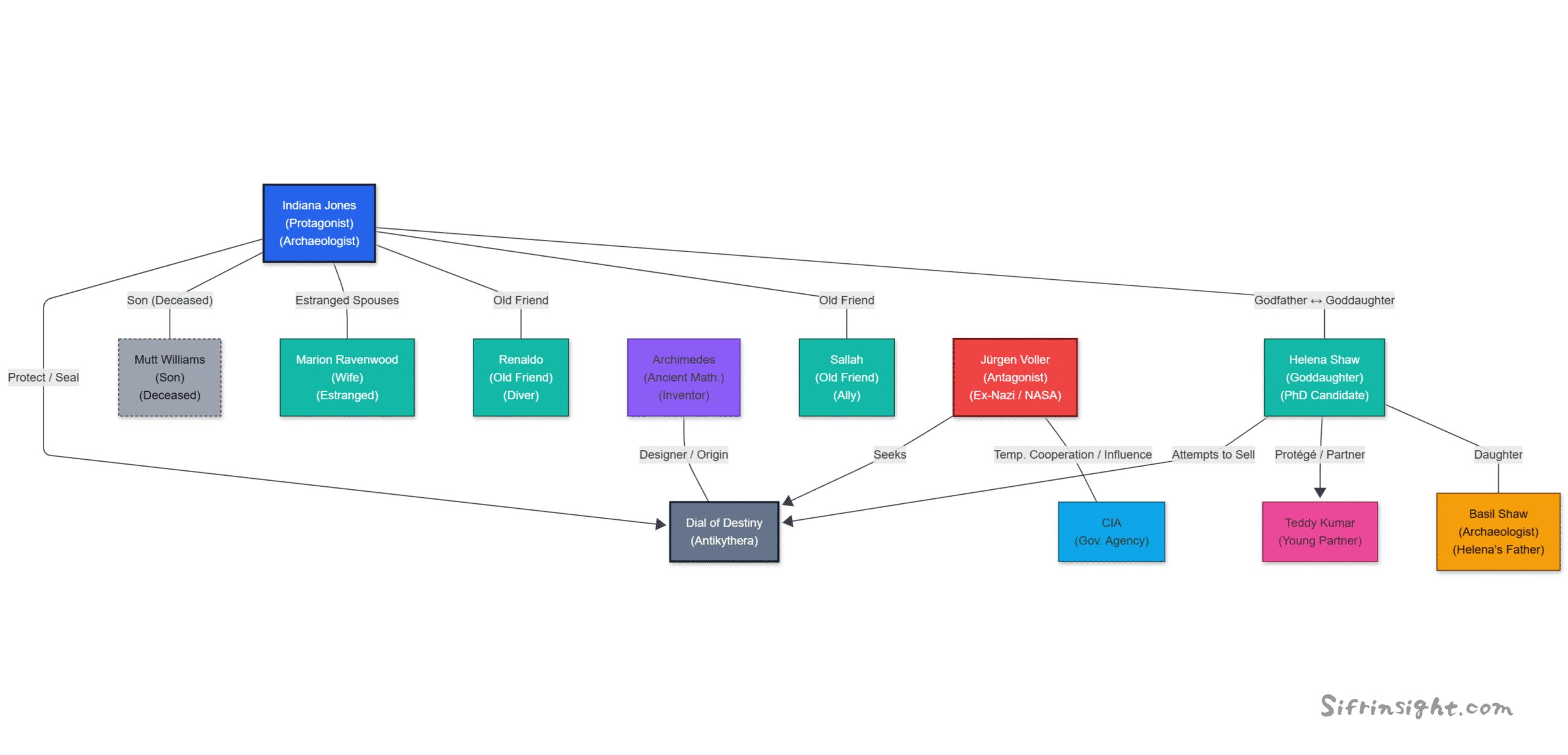
Story Explanation
In essence, this film is a time-traveling adventure centered on the Dial of Archimedes. The mystery of the “Dial” and the various action sequences are, of course, the primary attractions of the movie.
At the same time, as has always been the case with the Indiana Jones series, the film masterfully blends various historical facts and urban legends, which adds another layer of charm. The following article (in Japanese) covers World War II, the real-life inspiration for Dr. Schmidt, the Siege of Syracuse, and the Antikythera mechanism:
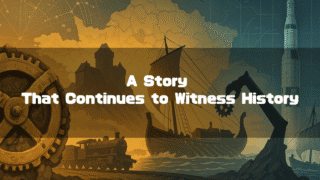
Furthermore, though not directly depicted, the Vietnam War casts a large shadow over the film. While it’s not essential to know the details, the fact that Indy’s son died there is crucial. Below is a brief overview.
The Vietnam War and America in 1969
In 1969, America was a nation of contrasts. While celebrating the glory of the first human landing on the moon, the protracted Vietnam War had become a grim reality in living rooms across the country. The Apollo 11 astronauts were welcomed with a ticker-tape parade in New York on August 13, with millions lining the streets. Meanwhile, the military draft and televised news coverage made the war a part of daily life, transforming the nation’s social fabric.
The Vietnam War’s origins lie in the 1954 Geneva Accords following the First Indochina War. The accords temporarily divided Vietnam at the 17th parallel, with the Democratic Republic of Vietnam led by Ho Chi Minh in the North, and a U.S.-backed government (later the Ngô Đình Diệm regime) in the South. In 1960, the National Liberation Front (the Viet Cong) was formed, escalating the civil war. The Gulf of Tonkin Resolution, passed by the U.S. Congress after the 1964 Gulf of Tonkin incident, dramatically increased American military involvement. In 1965, the U.S. fully entered the “Vietnam War” with the large-scale deployment of ground troops and the bombing of North Vietnam.
- From Inception to Escalation (1954–1965): The conflict transitioned into a full-scale war involving American society through stages: temporary division → solidification of North-South opposition → intensification of guerrilla warfare → Gulf of Tonkin Resolution → deployment of U.S. ground troops and bombing of the North.
- Shift in the Draft System (1969): On December 1, 1969, a lottery draft was reintroduced, assigning young men a draft order for the following year (Lottery Draft = A system where draft priority is determined by drawing birth dates). This made the system more visible and heightened anxiety within families.
- A Tipping Point in Anti-War Sentiment (1969): The Moratorium to End the War in Vietnam in October saw millions participate nationwide, and the November march on Washington drew 500,000 people, pushing protests to a critical mass (Moratorium = A nationwide anti-war demonstration).
- War Perception in the Television Age: After the Tet Offensive (Tet Offensive = a massive coordinated attack by North Vietnamese forces and the NLF during the 1968 Lunar New Year), the war became a “reality viewed in the living room,” with media coverage becoming a turning point for public opinion.
- Rise of Counterculture/Hippie Culture: A youth culture championing “love and peace” became mainstream, linking with anti-war, civil rights, and environmental movements. The Woodstock Festival (August 15–18, 1969), a convergence of music, community, and anti-materialism, was a symbolic event. The generational divide in values made the polarization over the war even more apparent.
- The Weight of Casualties: Even after the peak number of combat deaths (1968), bereaved families and communities in 1969 continued to bear the heavy burden of loss.
- The Policy Context of “1969”: The Nixon administration promoted “Vietnamization,” aiming to transfer authority to South Vietnamese forces and reduce U.S. troops. However, the actual fighting involved a mix of escalation and de-escalation, which only sharpened the divisions in public sentiment.
- The Path to Peace and U.S. Withdrawal (1970–1973): The “Vietnamization” policy led to an expansion of the war into Cambodia, intensifying domestic opposition. With government credibility shattered by the Pentagon Papers leak, the 1973 Paris Peace Accords finalized the complete withdrawal of U.S. troops.
- The End and the War’s Legacy (1975 onward): The civil war continued after the U.S. withdrawal, ending with the fall of Saigon in 1975. The war left devastating consequences for Vietnam and carved deep scars into American society, known as the “Vietnam Syndrome.”
As a result, in 1969, America was a place where “glory and pain” coexisted, creating a deeply distorted national atmosphere.
It was a particularly poignant time for Indy to be turning 70 and facing retirement (incidentally, mandatory retirement at a certain age no longer exists in U.S. universities).
And so, the “pain of the Vietnam War” for America is expressed through the death of Indy’s son.
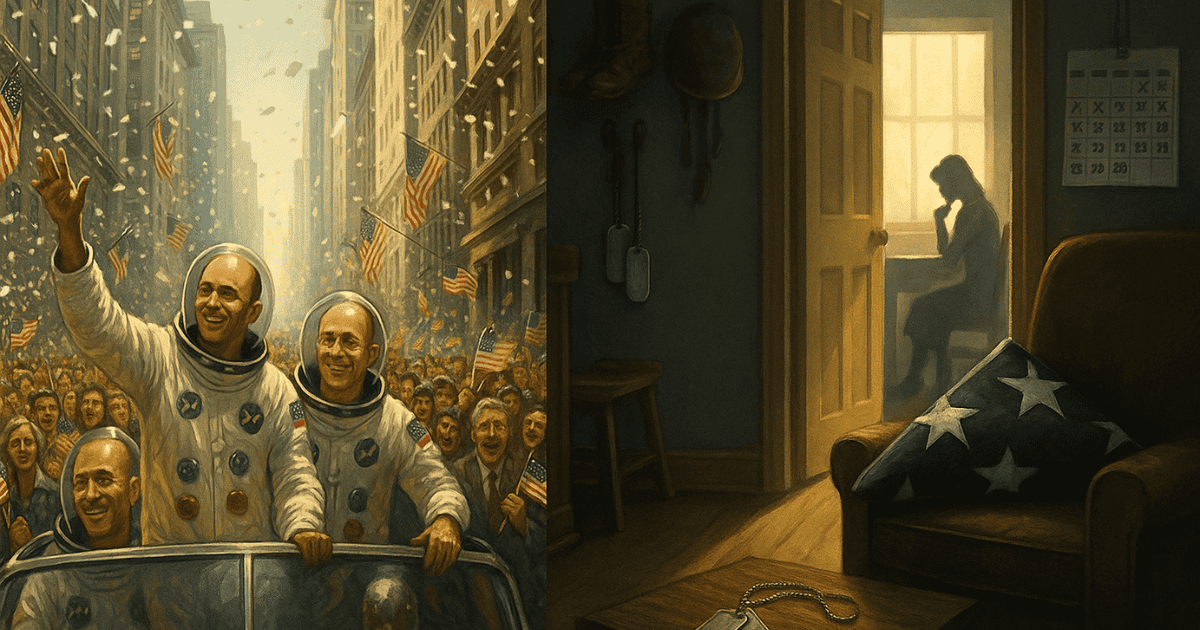
During the Vietnam War, a combination of conscription and volunteer enlistment was used. The fairness of the draft system was questioned, leading to the lottery draft mentioned earlier. This system, which determined draft priority by randomly drawing capsules with the 366 days of the year, was entirely dependent on luck (targeting men aged 18 to 25).
Based on Indy’s line in the film, we can infer that his son was a volunteer, not a draftee (which is why his enlistment was an act of defiance against Indy).
“I’d stop my son from enlisting.”
Some might cynically think, “Even if he stopped him from enlisting, wouldn’t he have been drafted and killed anyway?” However, the draft applied to men aged 18 to 25. Since Mutt was estimated to be around 19 in Kingdom of the Crystal Skull, assuming he died shortly before 1969, it’s plausible that if Indy had prevented him from volunteering, he would not have been drafted.
And this is precisely why Indy and Marion continue to suffer so deeply from his death.
Next, to better understand the character of Helena, let’s explore the social advancement of women in America at the time (another aspect not explicitly depicted).
The State of Women’s Social Advancement in America at the Time
The year 1969 was a time when New York celebrated the return of Apollo 11 and second-wave feminism became more visible. While legal frameworks prohibiting gender discrimination were being established and social movements provided momentum, the transformation of workplace practices was still a work in progress. The developments around the film’s time period can be summarized as follows:
- Employment Realities: The 1960s saw a rise in women’s labor force participation and an expansion into professional fields. However, the wage gap, job segregation, and the “glass ceiling” in promotions remained firmly in place. The continuous employment of married women in urban areas was gradually becoming more common.
- Institutional Progress and Limitations: Legal barriers began to crumble with the Equal Pay Act of 1963, Title VII of the Civil Rights Act of 1964, the founding of NOW in 1966, and the EEOC guidelines of 1968. However, full implementation in the workplace was slow, and old practices lingered.
- Barriers in Practice: Deep-seated assumptions—such as restrictions based on marriage or age, biases in tenure selection, and the stereotype of “women in support roles”—created bottlenecks in hiring, evaluation, and promotion, hindering real progress.
- Signs of the Apollo Era: Women played key roles in the space program as computers, software engineers, and engineers, creating visible role models. While this challenged prejudices, its broader impact had yet to fully materialize.
Connection to the Film’s World
Considering the above, the social advancement of women in the U.S. in 1969 can be described as a two-tiered structure: “the system was evolving, but practice was in transition.” Therefore, a character like Helena, who actively operates in the worlds of academia, trade, and adventure, is positioned as a pioneer, half a step ahead of the average woman of her time.
Most importantly, understanding this historical context reveals the meaning and irony behind Helena’s motivation to earn a fortune by auctioning stolen goods.
In other words, the film seems to imply a cynical reality: for a woman of superior intellect and drive in that era, “wasn’t something quasi-criminal the only way to independently earn a large sum of money?”
This also serves as a self-aware critique of the Indiana Jones series itself, which has long faced scrutiny for its themes of “tomb raiding.”
Thus, the film skillfully weaves in themes of the “Vietnam War” and “women’s rights” without explicitly depicting them. This adds a profound depth to what is, on the surface, a time-traveling adventure film about the Dial.
Incidentally, Helena claims in the film to be a doctoral candidate, but it’s reasonable to assume this was a lie to deceive Indy.
Now, let’s take a more detailed look at the synopsis of Indiana Jones and the Dial of Destiny.
World War II and the Encounter with the Dial of Destiny
In 1944, during the final days of World War II in France, archaeologist Indiana Jones, along with his friend Basil Shaw, infiltrates a fortress in the French Alps to recover the legendary “Lance of Longinus,” which was said to have been stolen by the Nazi German army. However, they are captured, and their mission appears to have failed.
Having narrowly escaped, Indy begins to pursue the train transporting Basil and the Lance of Longinus. Onboard, Nazi scientist Jürgen Voller is passionately explaining to his superior that the lance is a fake and that the truly valuable artifact is the “Dial” (the Antikythera mechanism), invented by the ancient Greek genius Archimedes. Voller, holding one half of the Dial, believed that completing it would grant him god-like powers.
Indy catches up to the train and rescues Basil. In the ensuing struggle, he knocks out Voller with a single blow, and Basil, who had overheard their conversation, seizes the Dial. To escape their pursuers, the two leap from a bridge into a river below, narrowly surviving. Thus, one half of the “Dial of Archimedes” fell into Basil’s hands.
1969: A Retired Hero Faces a New Shadow
The story moves to New York City in 1969. Indy is facing his retirement from Hunter College, where he has taught for many years. His only son was killed in the Vietnam War, and he is in the process of divorcing his wife, Marion. The once-celebrated hero is plagued by loneliness and a sense of powerlessness. While the city erupts in celebration for the successful Apollo 11 moon landing and the astronauts’ parade, Indy quietly nurses a drink at a bar.
A young woman appears. She is Helena Shaw, the daughter of his old friend, Basil Shaw, and also Indy’s goddaughter. Indy is stunned by this reunion after 18 years. Helena, claiming to be a doctoral candidate in archaeology, is pursuing the “Dial of Archimedes,” continuing her father’s research.
In his later years, Basil had become obsessed with the Dial, believing it to be a dangerous device capable of predicting “fissures in time.” Fearing its potential danger, he entrusted it to Indy to be destroyed. However, Indy couldn’t bring himself to destroy his friend’s life’s passion and had hidden it in the university archives.
In the film, Indy refers to Helena as his “goddaughter,” but this doesn’t mean he literally named her.
The term originates from Christian culture and signifies that he was her godfather, a guardian who stands in at a child’s baptism.
Thus, when Indy calls Helena his “goddaughter,” it expresses that he feels a special affection for her, to the point of being responsible for her even in place of her father, his dear friend Basil.
The Chase for the Dial Begins
As Indy shows Helena the Dial in the archives, he senses something is off about her demeanor. Moments later, a mysterious group attacks them. Their leader is none other than his old nemesis, Voller. Now going by the name “Dr. Schmidt,” he has become a NASA scientist who contributed to the Apollo program and even has the cooperation of the CIA. His henchmen had already killed two university employees to get to Indy.
As if she knew the attackers’ identities, Helena abandons Indy, stealing the Dial and fleeing. Indy manages to escape, but he is framed for the murder of the university employees and becomes a fugitive. Hiding with the help of his old friend Sallah, Indy learns that Helena was arrested a year ago in Tangier, Morocco, for involvement in a stolen goods auction and has ties to local gangsters.
Convinced she plans to auction the Dial, Indy heads to Tangier. He finds Helena at a hotel auction, but Voller’s gang is also there. It turns out Helena was originally hired by Voller but, dissatisfied with her payment, betrayed him to sell the Dial herself. In the ensuing three-way struggle, the Dial is taken by Voller. To complicate matters further, Helena’s betrayed ex-fiancé, a gangster, also shows up. Indy and Helena, along with her young sidekick Teddy, narrowly escape Tangier.
The Clue to the Other Half Sleeps in the Aegean Sea
Now sharing a common enemy, Indy and Helena decide to work together to find the other half of the Dial. Helena, who has memorized Basil’s research notes, is certain that the clue, the “Graphikos,” lies in the Aegean Sea. Indy agrees, reasoning that given the circumstances of Archimedes’ death during the Siege of Syracuse, it’s the only logical place.
With the help of his old friend Renaldo, a top-tier diver in Greece, the group sets out into the Aegean. Deep below the underwater ruins where one half of the Dial was found, they discover the “Graphikos” resting within a Roman shipwreck. However, upon returning to their boat, they are ambushed by Voller’s gang. Frustrated by Indy’s refusal to decipher the tablet, Voller mercilessly shoots and kills Renaldo. Witnessing this atrocity, Helena pretends to cooperate with the deciphering to survive.
The decoded Graphikos indicates that the other half of the Dial is in the historical site of the Library of Alexandria. However, Helena creates a diversion with hidden dynamite, grabs the Graphikos, and manages to escape.
The “Dial of Archimedes” is Completed
After their escape, Indy realizes the Graphikos is more than just a tablet. From within the wax and wood plate, a golden disc emerges. The true location inscribed on it is a cave in Sicily called the “Ear of Dionysius.” However, Voller has also figured out their destination and kidnaps Teddy on the island.
Worried about Teddy, the two nevertheless proceed to the cave. Deep inside, they discover the tomb of Archimedes and find the other half of the Dial clutched by the skeleton. But on the skeleton’s wrist is a watch, an invention from the distant future. As the mystery deepens, Voller appears and finally gets his hands on the complete “Dial of Archimedes.”
Voller’s goal is to use the Dial to find a fissure in time, travel to Munich in 1939, assassinate Hitler, and correct the “mistake” of World War II’s outcome, leading the Nazis to victory. However, Archimedes’ calculations, lacking modern knowledge of continental drift, contained a slight error. The fissure in time they fly their bomber into leads not to 1939 Germany, but to the middle of the Siege of Syracuse in 214 BC.
In the film, Indy hypothesizes that the Dial’s calculations would be off due to continental drift, and indeed, they end up in an unexpected era.
However, considering the film’s overall narrative, it’s more natural to interpret that the “Dial was intentionally designed by Archimedes to summon help to his own time (the Siege of Syracuse in 214 BC).” Voller, misunderstanding it as an all-powerful time machine that could go to any era, ended up acting exactly as Archimedes had intended.
Helena makes a similar remark.
A Conclusion Beyond Time
Attacked by the ancient Roman army, the bomber crashes, and Voller is killed. At the crash site appears none other than a young Archimedes himself. He retrieves the watch from the fallen Voller’s wrist and the completed Dial. This was the answer to the mystery of the watch Indy saw in the tomb.
Having bailed out with a parachute, Indy beholds the historical scene he had pursued his entire life and decides to remain in this era. However, Helena vehemently objects, knowing Indy can’t survive with his worsening gunshot wound. When he refuses to listen, she lands a powerful punch, knocking him out cold.
When Indy awakens, he is back in his apartment in 1969. He tells Helena he wanted to stay in the past, but just then, his estranged wife Marion appears. Having regained the bond with the person he thought he had lost, Indy shares a quiet kiss with Marion, and his tumultuous adventures come to a close with gentle love.
From here, I will delve into an analysis of the two topics mentioned at the beginning.
Indiana Jones and the Dial of Destiny(2023) Analysis

Indy’s True Reason for Wanting to Stay in the Past
At the story’s climax, a gravely injured Indy strongly desires to remain in the age of Archimedes, a world he had only dreamed of. At first glance, this seems to stem from his pure intellectual curiosity as an archaeologist and his despair with his own world. But… might there have been another motive? Let’s explore that first.
The Common Ground Between Voller and Indy: A Past They Want to Change
The film’s antagonist, Voller, planned to use the “Dial of Destiny” to go back in time, assassinate Hitler, and alter the course of World War II in the Nazis’ favor. He sought to correct history with his own hands.
Meanwhile, Indy had also suffered a great loss: his son Mutt was killed in the Vietnam War, and the grief had destroyed his relationship with his wife, Marion. He, too, had a past he desperately wanted to change: his son’s death. Voller, who schemed to alter history, and Indy, who tried to stop him—while they were adversaries, they were also two sides of the same coin in that they both “had a past they wished to change.”
Denying History’s Alteration, Yet Drawn to Its Allure
Of course, as an archaeologist, Indy understood the dangers of interfering with history better than anyone. That’s why he fought so hard to stop Voller’s plan.
However, when he actually arrived in the era of Archimedes, a time he had yearned for his entire life, his resolve wavered. If he returned to the present, all that awaited him was the grief of losing his son, his separation from his wife, and his retirement from the university—a reality devoid of hope. The allure of witnessing a historic moment, combined with his despair for his own world, led him to choose to stay in the past.
However, it seems he had another plan in mind.
A Faint Hope for a Timeline Where His Son Lives
We get a glimpse of this plan in his conversation with Helena after they return to the present:
Now, Indy must have been fully aware of the dangers and the potential impact his remaining in the past could have on the future. Yet, deep in his heart, he likely held a desperate wish. It was the faint hope of a father: “If my staying in the past changes history even a little, maybe it could create a future where my son Mutt doesn’t die.”
It wasn’t a logical thought but perhaps the cry of a soul from a man drowning in grief. The ending, where Indy is knocked out by Helena, brought back to the present, and reunited with Marion, could be seen as his wish being granted in a different form.
Mutt’s death was a great sorrow for those of us who have followed the Indiana Jones series for years, but the film seems to be saying that in the real world, there were parents who bore the same scars as Indy and Marion.
Helena’s Enigmatic Nature: Revenge, Obsession, and Her Relationship with Mutt
The film’s other protagonist, Helena Shaw. At first glance, her actions seem selfish, driven by a fixation on money. But a deeper dive into her motivations reveals a complex mix of vengeful feelings and an unbreakable obsession born from her complicated relationship with her father, Basil.
Seemingly Contradictory Actions
Several contradictions are apparent in Helena’s behavior.
- She declares in the film, “The only thing worth believing in is cash.” True to her words, she acts as if even her father’s keepsake, the “Dial of Destiny,” is nothing more than a tool for profit.
- However, with her intellect and resourcefulness, she could have likely built her fortune through legitimate means rather than the dangerous path of smuggling archaeological artifacts (as noted in the explanation, this can be seen as a social commentary on how the only means for an independent woman to earn a fortune at the time was through criminal acts).
- The biggest contradiction is her obsession with the “Dial” itself. If her only goal were money, she could have given up when Voller stole it and looked for another lucrative scheme. But she continues to pursue the Dial, even at great personal risk.
These contradictions suggest that her motivations are not simply about greed.
The Curse of Her Father’s Madness and “Gifted Education”
The key to understanding Helena’s contradictions lies in her relationship with her father, Basil. The advanced code-breaking skills she demonstrates are a product of the “gifted education” she received from him. However, the father who provided that education was also a man who lost his sanity while obsessing over his research on the Dial.
For Helena, the archaeological knowledge and skills her father gave her are deeply intertwined with the abhorrent academic field that stole her beloved father from her. While she loved her father, she came to harbor a strong sense of disgust and hatred for the world of archaeology that drove him mad.
“Revenge” on Archaeology and an Obsession with the “Dial” That Drove Her Father Mad
This ambivalent emotion is the wellspring of her actions. When Helena steals and auctions archaeological artifacts, it’s more than just a way to make money. It is an act of “revenge” against the very world of archaeology that her father held sacred and for which he allowed his family to fall apart.
By turning historically significant artifacts into mere “cash,” she was likely trying to negate her father’s values and protect her wounded self.
But at the same time, she couldn’t bring herself to completely hate her father. It seems she also harbored an unbreakable obsession to know the truth about the “Dial” that had so captivated him. Was the “Dial” devoid of any supernatural power, or was her “father right all along?”
Finding that answer for herself was an essential process for her to find meaning in her father’s madness and to confront her own past.
An Adventure to Reclaim Her Father
Ultimately, this entire adventure for Helena was not just a journey for profit, but also an “adventure to reclaim her father.” In other words, by determining whether her father was right or wrong, it was a journey to reclaim, in her heart, the father he was before he was consumed by madness, and to reclaim her own past.
Indy as the Lost Father and Helena as the Lost Child
As discussed, Helena’s attitude toward artifacts was the complete opposite of Indy’s.
In a sense, this represents a clash between “old values” and “new values,” a conflict that has repeated throughout history. More importantly, it is a conflict that often manifests acutely between a parent and a child. This is evident in the previous film, Kingdom of the Crystal Skull, where Indy’s attitude toward Mutt’s decision not to go to college instantly changes the moment he learns Mutt is his son.
Before Mutt enlisted in the army as an act of “defiance against his father,” there was likely an intense conflict over his “way of life.” But as long as he was alive, there was always a chance for a thaw, or at least the possibility to continue arguing indefinitely.
Helena, on the other hand, watched her father descend into madness through his research on archaeology (and the “Dial”), and she surely questioned his way of life. While there’s no definitive information on when Basil died, the film suggests it was soon after Indy received the “Dial.” If we assume this, Helena may not have even had the chance to argue with him about his life choices.
In any case, both of them were “unjustly deprived of experiences that a normal parent and child would have.” One by war, the other by the madness of research.
In other words, one could say that throughout the film, the two were engaged in a grand “virtual family feud.”
And so, by watching Indy, Helena was able to rationalize her father’s passion for archaeology and his madness, and Indy, in turn, passed on the baton he was never able to hand over.
However, it is endlessly regrettable that the one to receive that baton was not Mutt. But that regret—the “pain of the Vietnam War”—had to be depicted to create a film about that era in America. Given the nature of the Indiana Jones series, it was impossible not to portray it.
This film is a “Vietnam War film” that manages to express its sorrow without directly depicting it; it is a “work that carries a hope for the expansion of women’s rights”; and by depicting generational conflict, it is a “work that portrays the sorrow of division and the hope of overcoming it.”
And since it accomplishes all this without being preachy, wrapping it all into a single piece of entertainment, shouldn’t this film be called a masterpiece?
These are my personal thoughts on Indiana Jones and the Dial of Destiny. Trying to put them into an article revealed many different facets, and I truly felt it was a “film that depicted America.”
As I mentioned, from a narrative standpoint, I think it’s a masterpiece. The only slight disappointment was that I felt “the action scenes were too many and too long.” Especially the car chase scene in Tangier—even on my first viewing in the theater, I thought, “This is long… I’ve had enough.”
But that’s about my only complaint. What did all of you think of this film?
About the Author
Recent Posts
- 2025-10-21
Indiana Jones and the Dial of Destiny(2023): Full Synopsis & Analysis: Indy’s True Motive and the Enigma of Helena - 2025-10-15
Indiana Jones and the Dial of Destiny(2023):Historical Background-WWII, the Real Dr. Schmidt, the Siege of Syracuse, and the Antikythera Mechanism - 2025-10-08
Why Does Children Who Chase Lost Voices Feel So Ghibli-esque? [Makoto Shinkai’s “Tale of Farewell”] - 2025-10-07
5 Centimeters per Second: Characters, Voice Actors, Character Analysis and Character Map - 2025-10-06
5 Centimeters per Second: Full Synopsis, Analysis, Ending Explained & Character Map (Spoilers)

